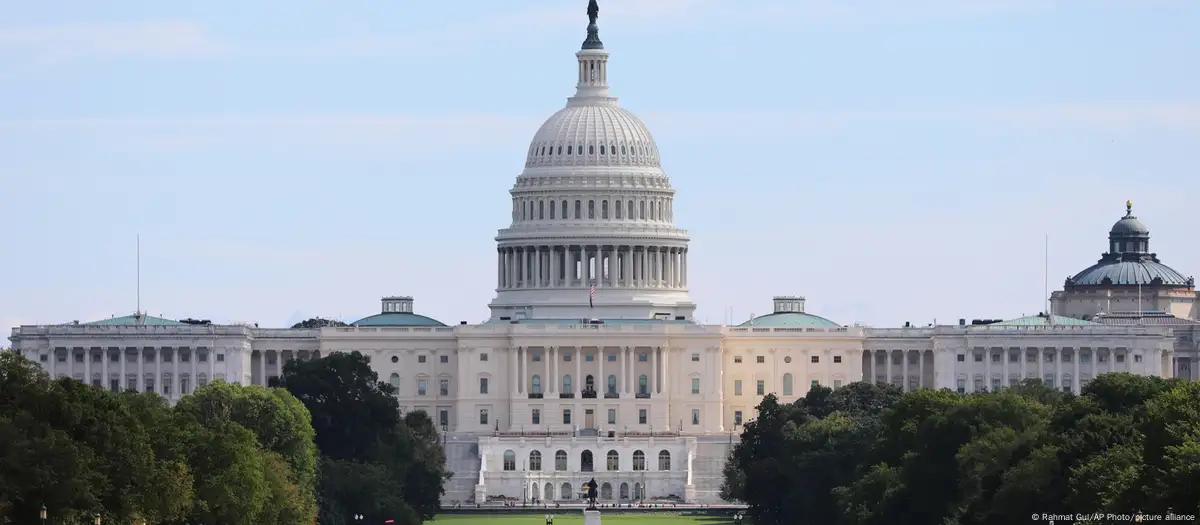
Without agreement in Congress around the budget, the US government paralyzed its activities, with impacts on non -essential services and the use of more than 700,000 civil servants.
The United States government paralyzed its operations after midnight on Wednesday (01/10) amid a tense budget impasse between President Donald Trump and the Democrats in Congress. As a financing measure has not been approved to maintain activities, federal services will be interrupted, affecting the lives of millions of people and the use of hundreds of thousands of federal civil servants.
Both parties had until 11:59 pm (local time) of September 30, when the fiscal year ended, to approve the funds that would allow government agencies to continue operating fully. Republicans only managed to get two of the seven democratic votes they needed in the Senate to approve a provisional funding package that would have kept the government totally operational for another seven weeks. Thus, both parties would have more time to negotiate the full budget for next fiscal year.
In turn, Democrats also did not achieve the 13 supports necessary for their budget proposal, which destines more funds for health and that, as well as the Republican bill presented by Trump, was rejected in the Senate.
The last and largest federal stoppage took place between 2018 and 2019, during Trump’s first term, when sectors of the government were closed for 35 days. At the time, the impasse between Democrats and Government was around the president’s demand to finance a wall on the border with Mexico.
This time, the opposition requires Trump to extend health subsidies that will exhale at the end of the year and restore recent cuts made at Medicaid, the American Health Care Program.
What should happen?
This is the 15th government stoppage since 1981. It is unclear how long it should last and the scope of its impacts. Employees are oriented not to attend work, except those who provide essential services such as air traffic control and law application.
Trump management has increased the pressure this time: it guided agencies to consider the resignation of employees rather than the usual practice of retaining their salaries until the legislators reach an agreement. It is estimated that 750,000 federal servants may suffer from impact on impasse-those considered essential should continue to work.
The need to avoid a stoppage “has reached a new level of urgency,” said the American Federation of Public Officials (AFGE), installing the legislators to meet and reach an agreement, avoiding using servers as a “exchange coin.”
Blackout should also interrupt the dissemination of economic data that mark political decisions and evaluations on economic perspectives. The employment report, one of the most anticipated economic indicators, would be released this Friday (05/10), which should not happen.
US travelers may face longer lines at airport control points during government stoppage | Ap
What is a shutdown?
The government paralyzes its operations when there is no agreement on the year budget, partially or total. The situation involves discretionary expenses – non -compulsory expenses that the government needs to approve annually, such as investments in infrastructure and culture.
Without approved budget, the federal government fails to pay federal and hired employees working for the government. Each stoppage is different and affects sectors of the government in a specific way.
In cases of partial stoppage, only part of the budget is authorized, maintaining the release of funds for federal agencies, which continued their work normally. In wide stoppages, such as the current, no budget is approved. In these situations, all agencies and non -essential programs of the US government close as they depend on the annual government financing.
Some federal agencies have clear contingency plans and establish well -defined priorities; others not. Some also have money reserves that can help them overcome a short background of blackout.
In any case, essential services and mandatory spending programs do not stop. This means that the secret service, the active military and most border protection agents, federal agents and air traffic controllers continue to work.
While discretionary expenses are discussed each year, mandatory expenses are approved for longer or permanent periods. Therefore, payments such as Social Security, Medicare and Medicaid will continue to be made, as are the health benefits of military veterans. The delivery of correspondence and the Federal Reserve (Fed, the Central Bank) are not affected because they are financed differently.
Who is affected?
Federal employees are the first to feel the impact of a government stoppage. The latest blackouts, in 2013 and 2018, implied the temporary dismissal of about 850,000 of the 2.1 million federal officials not linked to the postal service, according to the committee for a responsible federal budget, a Washington -based apartidal group, dedicated to the analysis of fiscal policy.
Away servers cannot work and do not receive their salaries during this period. But they have a guarantee of retroactive payment when the government returns to work. Employees working on essential services should continue to work, but are not paid either during a stoppage. Federal employees who have been confirmed by the Senate cannot be removed. Already the president and the members of Congress continue to work and receive their salaries.
The Environmental Protection Agency, the Food and Medicines Administration, the Federal Trade Commission and the Securities Commission are among the most likely departments to close the doors during a government stoppage.
In previous stoppages, some bodies, such as the Defense Department, the State Department or the IRS, asked employees away to continue working to keep their activities working normally – again without receiving a salary until a spending bill was finally approved.
Other impacts
Depending on the time they remain closed, work in parks and museums accumulate, and millions of dollars are no longer gains by selling tickets. Routine health and safety inspections will be placed in the background.
 Museum and other cultural institutions are harmed by Shutdown, such as the National Museum of African History and Culture in Washington | Photoshot/Picture Alliance
Museum and other cultural institutions are harmed by Shutdown, such as the National Museum of African History and Culture in Washington | Photoshot/Picture Alliance
Important government reports on economics, such as consumer price index or monthly employment numbers, will not be published in time.
Other agencies or programs, such as NASA or Congress Library, are also considered not essential and interrupts their operations, partially or fully, during a government stoppage.
National parks, national monuments and museums such as Smithsonian can also close, but the Trump government can force them to remain open with a small team. But the longer the stoppage lasts, the more likely they also close.
For federal employees, a government stoppage can mean temporary financial difficulties and resentment.
To increase general uncertainty, the government implied that it could use this stoppage as an excuse for more mass layoffs. The White House Management and Budget Office sent a letter to federal agencies suggesting that they could “take this opportunity to consider reducing the workforce.”
How long does it last?
The responsible federal budget committee has four stoppage that affected government operations for more than one business day.
“A few days stopping is a nuisance – and undermines the trust of the public in the capacity of US politicians to take care of people’s affairs – but it is unlikely to have a significant impact on the economy,” David Wessel wrote of the non -profit institution Brookings Institution last year. “A prolonged stoppage, however, can cause major problems, although most are temporary.”
Congress’s Budget Office agrees that most of the economic impacts of government stoppages are temporary. But he estimated that the 2018-2019 stoppage led to a $ 3 billion reduction in the country’s Gross Domestic Product (GDP).
Shutdown, prolonged, also has the potential to slow down air traffic and suspend scientific research. Stopping still has an economic and financial effect by interrupting necessary long -term investments, with impacts on the country’s production.
Originally published by DW on 10/1/2025
Por timey rooks
Source: https://www.ocafezinho.com/2025/10/01/shutdown-nos-eua-o-que-acontece-e-quem-e-afetado/

